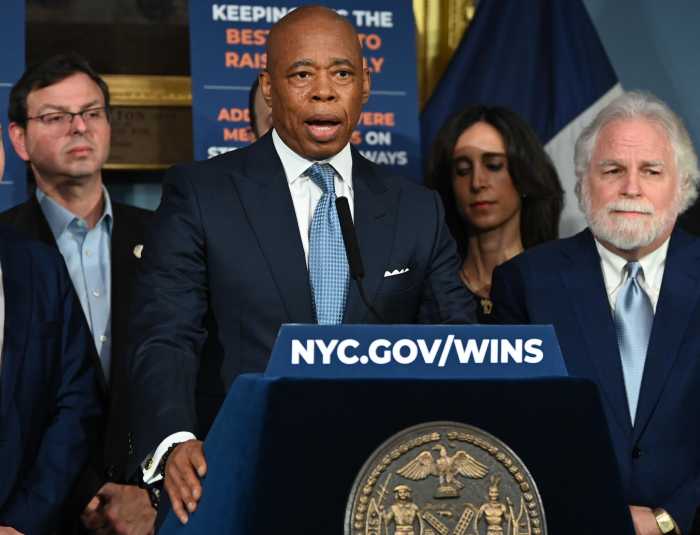There are school crowding problems all over the city but the problem is particularly acute in Downtown Manhattan and it may get worse faster than anywhere else.
Borough President Scott Stringer released a report a few weeks ago classifying the Village/Soho and Lower Manhattan south of Canal St. as two of four areas in Manhattan at “high risk” of neighborhood-wide school overcrowding.
Rapid real estate development is fueling this problem. Lower Manhattan was the fastest-growing part of the city before 9/11 and continues to be since.
The city was late to recognize the problem and is building two schools in Lower Manhattan, in part because of another compelling reason — it is also part of the national interest in ensuring Lower Manhattan’s recovery after the terrorist attack. But the numerical case is much more compelling: The number of new homes has more than doubled in Lower Manhattan since 2000, according to the Downtown Alliance business improvement district, and that does not even include most of booming Tribeca. The two K-through-8 schools will not open until 2010 under the most optimistic scenario, and may not be enough to accommodate the continuing population growth.
In the Village/Soho area, all of the elementary schools are overcapacity, according to Stringer’s report, and there is a need for a middle school. Hudson Square, a newer residential neighborhood, continues to grow, and with development continuing in the Village and Soho, the strain on P.S. 41 and P.S. 3 will only increase. The problem Downtown also extends to Chinatown, the Lower East Side, Chelsea and the East Village.
Community Board 2 has suggested about a dozen potential new school sites, with particularly promising possibilities at Pier 40 and 75 Morton St. The board will hold its second forum on finding sites for new schools on Thurs., May 8, at P.S. 41 on W. 11th St. at 6:30 p.m. We hope to hear specifics from the School Construction Authority and Department of Education at the forum, because the situation is dire.
For years, Lower Manhattan’s Community Board 1 pushed school officials to pay attention to their colleagues at other city agencies who were approving plans for thousands and thousands of new homes in Lower Manhattan. There are now 1,600 new school seats planned for Manhattan’s southern tip — a large number, certainly — but the completion date is uncertain. And Stringer and others suggest the new seats may only be enough to cover the current need, not what the demand will be over the next decade. Even if the new schools meet the need, D.O.E. still has not given nearly enough thought to what it will do this September or in the next two years, when the problem will almost undoubtedly get even worse.
School planning can’t continue to lag. As Ronnie Najjar, principal of P.S. 89 in Battery Park City, told us: “Schools have been an afterthought, and to me, that’s the real crime in all this.”

































